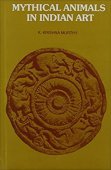Samaranganasutradhara, Samarāṅgaṇasūtradhāra, Samarangana-sutradhara: 3 definitions
Introduction:
Samaranganasutradhara means something in Hinduism, Sanskrit. If you want to know the exact meaning, history, etymology or English translation of this term then check out the descriptions on this page. Add your comment or reference to a book if you want to contribute to this summary article.
In Hinduism
Vastushastra (architecture)
Source: archive.org: Bharatiya vastu-sastraSamarāṅgaṇasūtradhāra (समराङ्गणसूत्रधार) (dealing with Architecture or Śilpa) refers to one of the works ascribed to King Bhoja, according to Bisheshwar Nath Reu.—King Bhoja of Dhārā, one of the greatest rulers of India, ruled from 1018 to 1060 A.D. He was great in the art of Government and war, but still greater in the art of peace. He had earned immortal fame as a great patron of poets and men of letters and a mass of legends has grown about his name. He is reported to be the author of more than three dozen works [i.e., Samarāṅgaṇasūtradhāra]. [...] Śrī Viśveśvara Nātha Reu has laboured very hard in his treatise on ‘Rājā Bhoja’ (publsihed by Hindustani Academy) in collecting all the available material on the subject to give an account of the life and works of Bhoja. He has given a list of the following thirty-four books ascribed to Rājā Bhoja of Dhārā [i.e., Samarāṅgaṇasūtradhāra]
Source: Knowledge Traditions & Practices of India: Architecture (1): Early and Classical ArchitectureSamarāṅgaṇasūtradhāra (समराङ्गणसूत्रधार) is the name of a Sanskrit word partly dealing with the “science of architecture” (vāstuvidyā).—Samarāṅgaṇasūtradhāra, authored by King Bhoja (1010-55 CE), discusses methods of examination of a site, analysis of the soil, systems of measurement, qualifications of the sthapati (architect) and his assistants, building materials, consecration of the plan followed by construction of foundation, basal mouldings and technical details for each part of the plan, design and elevation.

Vastushastra (वास्तुशास्त्र, vāstuśāstra) refers to the ancient Indian science (shastra) of architecture (vastu), dealing with topics such architecture, sculpture, town-building, fort building and various other constructions. Vastu also deals with the philosophy of the architectural relation with the cosmic universe.
Languages of India and abroad
Sanskrit dictionary
Source: Cologne Digital Sanskrit Dictionaries: Aufrecht Catalogus CatalogorumSamarāṅgaṇasūtradhāra (समराङ्गणसूत्रधार) as mentioned in Aufrecht’s Catalogus Catalogorum:—vāstuśāstra, by Bhojadeva. Kh. 75.
Sanskrit, also spelled संस्कृतम् (saṃskṛtam), is an ancient language of India commonly seen as the grandmother of the Indo-European language family (even English!). Closely allied with Prakrit and Pali, Sanskrit is more exhaustive in both grammar and terms and has the most extensive collection of literature in the world, greatly surpassing its sister-languages Greek and Latin.
See also (Relevant definitions)
Partial matches: Sutradhara, Samarangana.
Full-text (+235): Oka, Niketa, Kshaya, Nidhana, Vasati, Layana, Pratishraya, Sharana, Samshraya, Nida, Avasa, Sadman, Nakshatracakra, Alaya, Sadana, Agara, Nilaya, Griha, Balikarman, Grahapancaka.
Relevant text
Search found 13 books and stories containing Samaranganasutradhara, Samarangana-sutradhara, Samarāṅgaṇa-sūtradhāra, Samarāṅgaṇasūtradhāra; (plurals include: Samaranganasutradharas, sutradharas, sūtradhāras, Samarāṅgaṇasūtradhāras). You can also click to the full overview containing English textual excerpts. Below are direct links for the most relevant articles:
Vastu-shastra (5): Temple Architecture (by D. N. Shukla)
Chapter 11 - Correspondence of the Prāsādas with Monuments
Chapter 2 - The Origin of the Prāsāda-vāstu
Vastu-shastra (3): House Architecture (by D. N. Shukla)
Chapter 2 - Buildings in General
Chapter 11 - Concluding Remarks
Vastu-shastra (1): Canons of Architecture (by D. N. Shukla)
(iii) Method of Study < [Chapter 1 - Introduction]
(v,11) Vāstu in the Śilpa-texts < [Chapter 4 - An outline History of Hindu Architecture]
Samarangana-sutradhara (Summary) (by D. N. Shukla)
Chapter 1 - The Advent of Earth (Mahāsamāgamana)
Chapter 21 - The Altar (Vedī-lakṣaṇa)
Vastu-shastra (2): Town Planning (by D. N. Shukla)
Towns or Cities in ancient Indian town-planning < [Chapter 2 - Villages, Towns and Forts in General]
Kashyapa Shilpa-shastra (study) (by K. Vidyuta)
2 (b). Vāstuśāstra texts < [Chapter 1 - Introduction]
6. Scope and Focus (of the Present Study) and Conclusion < [Chapter 1 - Introduction]
4.3. Vāstupada-vinyāsa (site-planning) < [Chapter 1 - Introduction]
Related products
